Announced
Production status
Original name
System
Pros and cons
Genres or subjects of photography
Recommended slowest shutter speed when shooting static subjects handheld
The Holy Trinity of lenses (Nikon F, F/2.8G)
Nikon AF-S Nikkor 24-70mm F/2.8G ED
Standard zoom lens • Digital era
Abbreviations
| AF-S | The lens is equipped with Silent Wave Motor. |
| G | The lens does not have an aperture control ring and is intended for use on Nikon digital SLR cameras that allow the lens aperture to be adjusted via the camera's command dial. Relays subject-to-camera distance information to the camera, like a D-type lens. |
| ED | The lens incorporates low dispersion elements. |
Model history
| ■Nikon AF-S Nikkor 24-70mm F/2.8G ED | A | 15 - 11 | 0.38m | ⌀77 | 2007 ● | |
| ■Nikon AF-S Nikkor 24-70mm F/2.8E ED VR | A | 20 - 16 | 0.38m | ⌀82 | 2015 ● | |
| Nikon AF-S Nikkor 24-70mm F/2.8E ED VR “100th Anniversary Edition” | 2017 ● | |||||
Specification

| Optical design: | |
| 24mm - 70mm [2.9X zoom ratio] | |
| F/2.8 across the focal length range | |
| 35mm full frame | |
| Nikon F [46.5mm] | |
| 84° @ 24mm - 34.3° @ 70mm (35mm full frame) | |
| 15 elements in 11 groups | |
| 3 ASPH, 3 ED | |
| Internal focusing (IF) | |
| On Nikon D APS-C [1.53x] cameras: | |
35mm equivalent focal length range: | 36.7mm - 107.1mm (in terms of field of view) |
35mm equivalent speed range: | F/4.3 (in terms of depth of field) |
Diagonal angle of view: | 61° @ 24mm - 22.8° @ 70mm |
| Diaphragm mechanism: | |
Diaphragm type: | Automatic |
Aperture control: | None; the aperture is controlled from the camera |
| 9 (nine) | |
| Zooming: | |
Zoom mechanism: | Manual |
Zoom control: | Zoom ring |
Zoom type: | Rotary |
Zooming method: | Extends while zooming |
| Focusing: | |
| 0.38m | |
| 1:3.7 @ 70mm | |
Focusing modes: | Autofocus, manual focus |
Autofocus motor: | Silent Wave Motor |
Manual focus control: | Focusing ring |
Focus mode selector: | M/A - M |
Manual focus override in autofocus mode: | Yes |
| Vibration Reduction (VR): | |
| - | |
| Physical characteristics: | |
| 900g | |
| ⌀83×133mm | |
| - | |
| - | |
| Accessories: | |
| Screw-type 77mm | |
| HB-40 - Bayonet-type petal-shaped | |
| Not compatible |
Source of data
- Manufacturer's technical data.
Manufacturer description
August 23, 2007
PROFESSIONAL ZOOM LENSES ENTER "PRIME TIME" WITH TWO NEW NIKKOR LENSES THAT RIVAL PRIME-LENS PERFORMANCE
MELVILLE, N.Y. – Nikon today announced two new high performance NIKKOR lenses that offer remarkable sharpness, clarity and contrast. The new AF-S NIKKOR 14-24mm f/2.8G ED lens is one of the fastest 14mm ultra-wide angle zoom lenses available today while the new AF-S NIKKOR 24-70mm f/2.8G ED lens is a highly versatile lens ideal for a broad range of applications and lighting conditions. While designed for use with either of Nikon's FX and DX format digital SLR cameras, these new lenses truly maximizes the potential of Nikon's recently announced D3 FX-format professional digital SLR camera. Combined with Nikon's venerable AF-S NIKKOR 70-200mm f/2.8G ED VR, these new lenses now offer professional photographers the ideal three-lens solution with a constant f/2.8 aperture across all three lenses.
"The AF-S NIKKOR 14-24mm f/2.8G ED represents one of Nikon's best optical designs with performance that rivals that of prime lenses. And we anticipate the AF-S NIKKOR 24-70mm f/2.8G ED will become very popular among professional photographers due to its remarkable versatility and optical performance. Both lenses maintain an astounding level of sharpness from the center of a picture to its edges and corners throughout their zoom range," said Edward Fasano, general manager for Marketing, SLR Systems Products at Nikon Inc. "Nikon produced its 40 millionth lens during the summer of 2007 and the introduction of these new lenses is a wonderful example of why NIKKOR lenses have been so successful."
Optical Innovations for Outstanding Image Quality
The two new lenses feature a variety of Nikon innovations that address the needs of professional photographers from a standpoint of focal length versatility and optical performance. Both lenses feature optical designs that incorporate ED (Extra-low Dispersion) glass elements for minimal chromatic aberration, and aspherical lenses including large-diameter PGM (Precision Glass Molding) elements to reduce coma and other types of aberration even at the widest aperture. Both lenses benefit from Nikon's exclusive Nano Crystal Coat - an extra-low refractive index coating that virtually eliminates internal lens element reflections across a wide range of wavelengths, and is particularly effective in reducing ghosting and flare. The lenses also feature Nikon's highly regarded Silent Wave motor (AF-S) that provides super fast and quiet auto focus operation. The result of all these innovations produces images that are vivid, sharp and deliver optimum contrast.
The AF-S NIKKOR 14-24mm f/2.8G ED lens is highly versatile and can be ideal for a range of different photographic applications. Photojournalists can tell the entire story with a single shot, interior photography can be done without fisheye distortion, or a breathtaking landscape can be captured in one frame.
The AF-S NIKKOR 24-70mm f/2.8G ED is a highly practical and multi-talented lens that allows photographers to photograph anything from tight portraits to expansive landscapes with just one high-performance fast aperture lens.
Compared to other standard zoom lenses in the Nikon F system
- Fastest speed (F/2.8), along with 4 other models
- Constant speed (F/2.8), along with 5 other models
- One of the heaviest (900g)
- One of the longest (133mm)
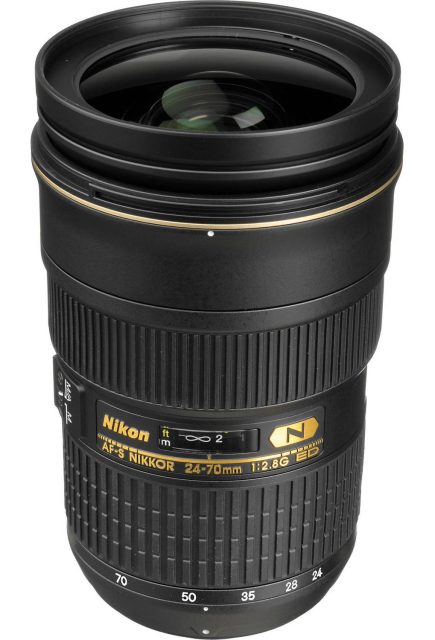


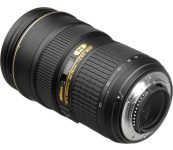
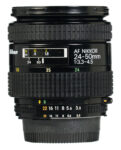
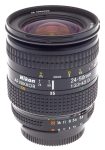

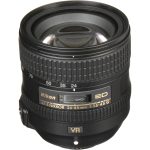
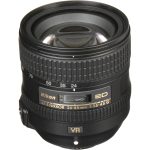
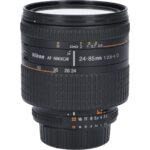
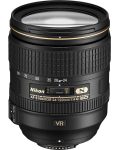
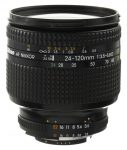
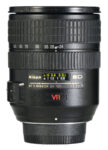

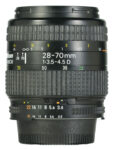

![Nikon AF Nikkor 28-80mm F/3.5-5.6D [I]](https://lens-db.com/wp-content/uploads/2012/07/nikkor-28-80d-01-105x150.jpg)
![Nikon AF Nikkor 28-80mm F/3.5-5.6D [II]](https://lens-db.com/wp-content/uploads/2012/10/AF-28-80-II-01-102x150.jpg)
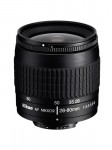
![Nikon AF Nikkor 28-85mm F/3.5-4.5 [I]](https://lens-db.com/wp-content/uploads/2012/10/AF-28-85-01-102x150.jpg)
![Nikon AF Nikkor 28-85mm F/3.5-4.5 [II]](https://lens-db.com/wp-content/uploads/2012/10/39433_6-105x150.jpg)
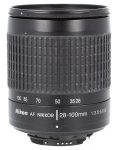
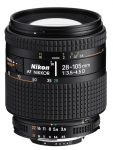
![Nikon AF Nikkor 35-70mm F/3.3-4.5 [I]](https://lens-db.com/wp-content/uploads/2012/10/s-l1600-29-150x150.jpg)
![Nikon AF Nikkor 35-70mm F/3.3-4.5 [II]](https://lens-db.com/wp-content/uploads/2012/10/41313_6-142x150.jpg)


![Nikon AF Nikkor 35-80mm F/4-5.6D [I]](https://lens-db.com/wp-content/uploads/2012/10/35-80D-133x150.jpg)
![Nikon AF Nikkor 35-80mm F/4-5.6D [II]](https://lens-db.com/wp-content/uploads/2012/10/s-l1600-1-150x150.jpeg)
![Nikon AF Nikkor 35-105mm F/3.5-4.5 [I]](https://lens-db.com/wp-content/uploads/2012/10/AF35105-01-100x150.jpeg)
![Nikon AF Nikkor 35-105mm F/3.5-4.5 [II]](https://lens-db.com/wp-content/uploads/2015/10/nikon-af-35-105-non-d-new-02-130x150.jpg)
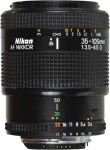
![Nikon AF Nikkor 35-135mm F/3.5-4.5 [I]](https://lens-db.com/wp-content/uploads/2012/10/N35135-84x150.jpeg)
![Nikon AF Nikkor 35-135mm F/3.5-4.5 [II]](https://lens-db.com/wp-content/uploads/2012/10/nikkor-35-135-II-01-96x150.jpg)
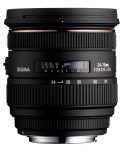
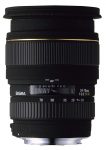
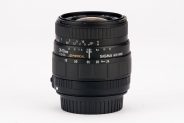
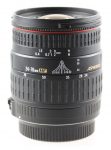

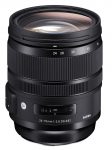
![Tamron SP AF 24-70mm F/2.8 Di [VC] USD A007](https://lens-db.com/wp-content/uploads/2012/07/tamron_24-70_f2-8vc-108x150.jpg)
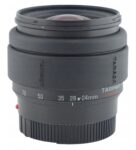
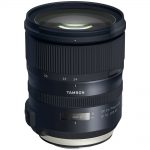
![Tokina AT-X Pro AF SD 24-70mm F/2.8 [IF]](https://lens-db.com/wp-content/uploads/2015/02/24_70FX_Ca_L-108x150.jpg)